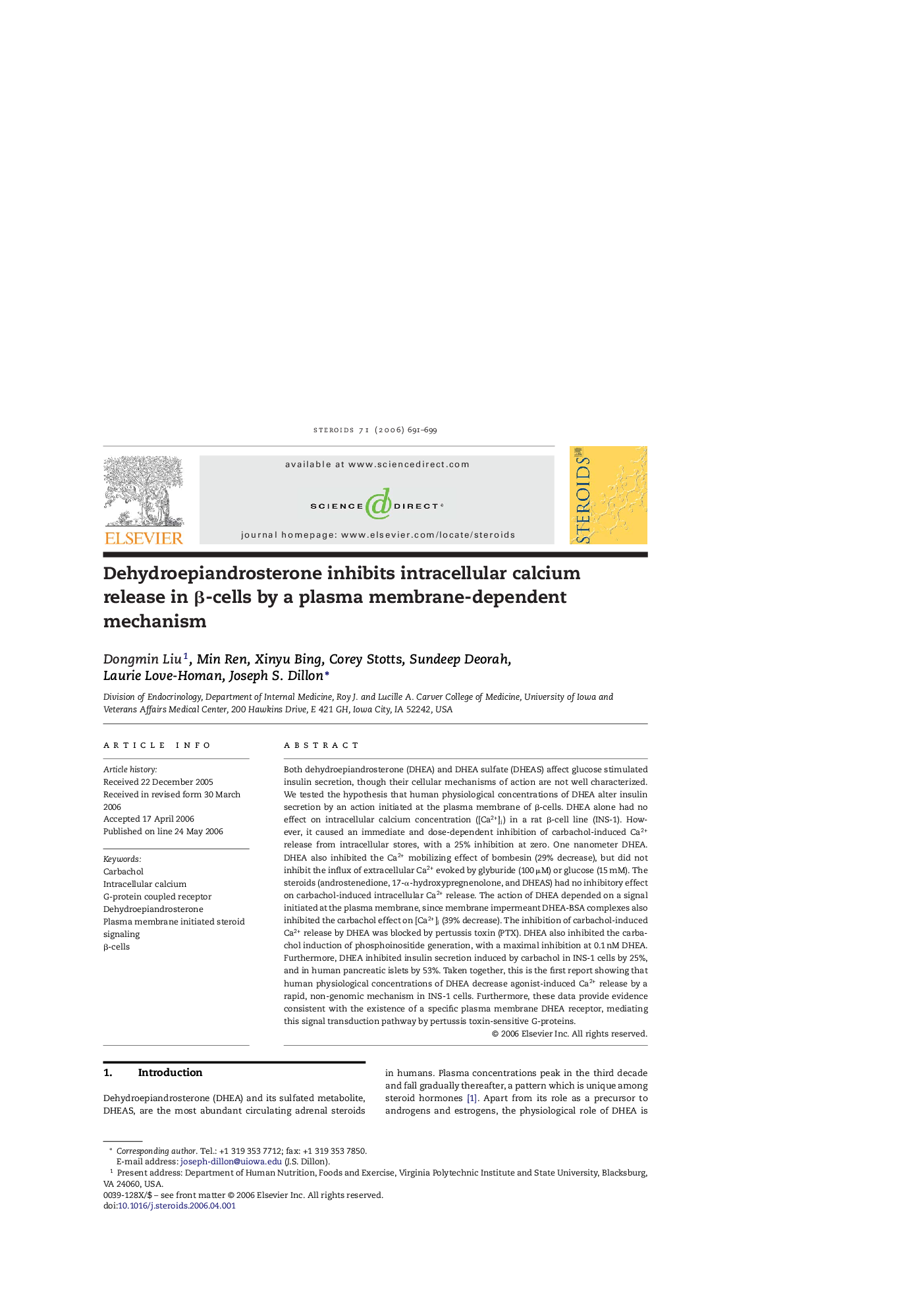| کد مقاله | کد نشریه | سال انتشار | مقاله انگلیسی | نسخه تمام متن |
|---|---|---|---|---|
| 2028952 | 1070456 | 2006 | 9 صفحه PDF | دانلود رایگان |

Both dehydroepiandrosterone (DHEA) and DHEA sulfate (DHEAS) affect glucose stimulated insulin secretion, though their cellular mechanisms of action are not well characterized. We tested the hypothesis that human physiological concentrations of DHEA alter insulin secretion by an action initiated at the plasma membrane of β-cells. DHEA alone had no effect on intracellular calcium concentration ([Ca2+]i) in a rat β-cell line (INS-1). However, it caused an immediate and dose-dependent inhibition of carbachol-induced Ca2+ release from intracellular stores, with a 25% inhibition at zero. One nanometer DHEA. DHEA also inhibited the Ca2+ mobilizing effect of bombesin (29% decrease), but did not inhibit the influx of extracellular Ca2+ evoked by glyburide (100 μM) or glucose (15 mM). The steroids (androstenedione, 17-α-hydroxypregnenolone, and DHEAS) had no inhibitory effect on carbachol-induced intracellular Ca2+ release. The action of DHEA depended on a signal initiated at the plasma membrane, since membrane impermeant DHEA-BSA complexes also inhibited the carbachol effect on [Ca2+]i (39% decrease). The inhibition of carbachol-induced Ca2+ release by DHEA was blocked by pertussis toxin (PTX). DHEA also inhibited the carbachol induction of phosphoinositide generation, with a maximal inhibition at 0.1 nM DHEA. Furthermore, DHEA inhibited insulin secretion induced by carbachol in INS-1 cells by 25%, and in human pancreatic islets by 53%. Taken together, this is the first report showing that human physiological concentrations of DHEA decrease agonist-induced Ca2+ release by a rapid, non-genomic mechanism in INS-1 cells. Furthermore, these data provide evidence consistent with the existence of a specific plasma membrane DHEA receptor, mediating this signal transduction pathway by pertussis toxin-sensitive G-proteins.
Journal: Steroids - Volume 71, Issue 8, August 2006, Pages 691–699